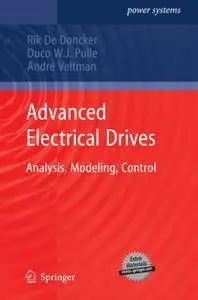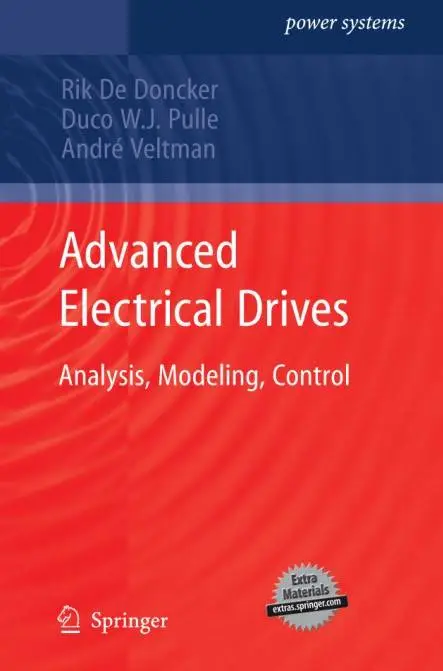Advanced Electrical Drives: Analysis, Modeling, Control By Rik De Doncker, Duco W.J. Pulle, André Veltman
English | PDF | 2011 | 462 Pages | ISBN : 9400701799 | 21.5 MB
Electrical drives convert in a controlled manner, electrical energy into mechanical energy. Electrical drives comprise an electrical machine, i.e. an electro-mechanical energy converter, a power electronic converter, i.e. an electrical-to-electrical converter, and a controller/communication unit.
Today, electrical drives are used as propulsion systems in high-speed trains, elevators, escalators, electric ships, electric forklift trucks and electric vehicles. Advanced control algorithms (mostly digitally implemented) allow torque control over a high-bandwidth. Hence, precise motion control can be achieved. Examples are drives in robots, pick-and-place machines, factory automation hardware, etc.
Most drives can operate in motoring and generating mode. Wind turbines use electrical drives to convert wind energy into electrical energy. More and more, variable speed drives are used to save energy for example, in air-conditioning units, compressors, blowers, pumps and home appliances.
Key to ensure stable operation of a drive in the aforementioned applications are torque control algorithms. In Advanced Electrical Drives, a unique approach is followed to derive model based torque controllers for all types of Lorentz force machines, i.e. DC, synchronous and induction machines. The rotating transformer model forms the basis for this generalized modeling approach that ultimately leads to the development of universal field-oriented control algorithms. In case of switched reluctance machines, torque observers are proposed to implement direct torque algorithms.
From a didactic viewpoint, tutorials are included at the end of each chapter. The reader is encouraged to execute these tutorials to familiarize him or herself with all aspects of drive technology. Hence, Advanced Electrical Drives encourages “learning by doing”. Furthermore, the experienced drive specialist may find the simulation tools useful to design high-performance controllers for all sorts of electrical drives.



